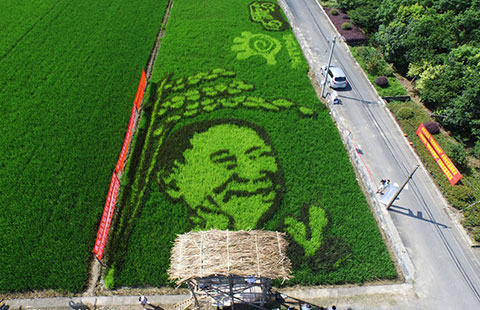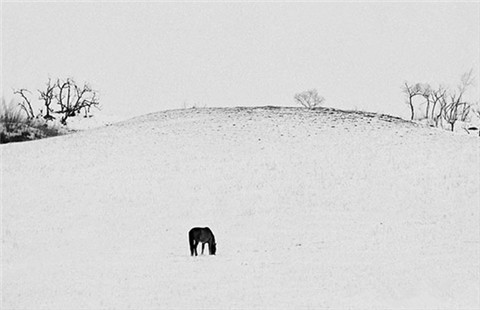Can we save forests and produce palm oil? Scientists seek answer
Updated: 2015-07-29 08:06
(Agencies)
|
||||||||
BARCELONA - Despite promises by many big companies that produce, trade and use palm oil to clean up their supply chains, complaints are still pouring in over the conversion of forests into plantations from West Africa to Southeast Asia, experts say.
A fledgling effort to balance forest protection and oil palm production aims to ease those tensions by enabling companies to meet growing demand for the cheap, edible oil, while ensuring villagers can feed their families and curbing climate-changing emissions from deforestation at the same time.
Led by an independent team of 50 scientists, a draft version of the "High Carbon Stock Study" - commissioned by a group of Asian oil palm growers, agribusiness giant Cargill and consumer goods firm Unilever - was released last month for consultation.
It proposes a new method for evaluating which land could be used for oil palm plantations, taking into account pressure to limit global warming and developing nations' desire to prosper.
"You don't protect the world's forests by coming out with big picture commitments for their own sake. You can only (do it) by giving people who live in and depend on those forests a proper economic stake in that set of decisions," said Jonathon Porritt, chair of the steering committee overseeing the study.
Dozens of companies that supply and purchase palm oil as a commodity - used in household products from shampoo to ice cream, as well as for fuel - have pledged not to source it from plantations on freshly cleared peat soils and forest land, or where the rights of workers and local people are abused.
But it's still unclear what those promises mean in practice.
"Everyone is making commitments to no deforestation or to protect the forest. But when you start delving a little deeper, the strange part of it is that there isn't really one agreed definition of what is a forest," said Biswaranjan Sen, who leads Unilever's global chemicals procurement team and co-chairs the board of the Roundtable on Sustainable Palm Oil.
RED, AMBER, GREEN
The High Carbon Stock Study is the latest attempt to classify land into different types of forest, and proposes thresholds to determine whether oil palm cultivation should be permitted based on the amount of vegetation and carbon stored above and below ground.
Under this system, land estimated to have 75 tonnes or more of carbon per hectare above ground - equivalent to 100 tonnes of biomass - and 75 tonnes or over in the soil could not be cleared.
This "red zone" would cover peat land, old-growth forests, selectively logged forests and native forests that have grown back for at least 20 years after being cut down, the study says.
In the "green zone", where an oil palm plantation would store more carbon over 25 years than the vegetation now on the land, clearing would be allowed. That is likely to apply to grassland and scrubland.
The more controversial "amber" area lies in between. It is here that tough decisions would have to be made in balancing projected carbon emissions from cutting down forest and the potential boost to local livelihoods from the palm oil industry.
The type of land expected to fall into this band would be young regenerating forest and other types of degraded forest.
A rising number of major firms now realise that to keep on producing palm oil in a world with limited resources, they have little choice but to change how they go about it, experts say.
"We all agree that you cannot do what we did 100 years ago in terms of agriculture, which is find the land, lay your claim, clear it and start planting," said Leela Barrock, head of corporate affairs for Malaysian-headquartered Sime Darby, the main instigator of the study.
Porritt said big companies are now searching for a new business model - but talk about "zero deforestation" could be unhelpful because few believe it really means that not a single tree will be cut down.
Governments of tropical forest countries, from West and Central Africa to Southeast Asia, face a trade-off, he noted.
"Some forest will be available for development ... but the suggestion is this has to be shared much more equitably with the people whose lives still depend completely on those forests," the British environmentalist explained.
COMMUNITY INCENTIVES
Marcus Colchester, a policy advisor with the Forest Peoples Programme, said the proposed new traffic light system, dubbed high carbon stock plus (HCS+), would be useful in dissuading companies from cutting down environmentally valuable forests.
But the battle would not end there, because from land concessions offered by governments, companies tend to select land without high carbon stock forests to plant palm oil, handing the rest back to villagers, he said.
That means "we have to deal with the communities, not the companies" to fully protect higher-value forests, he told the Thomson Reuters Foundation.
If local people are not offered incentives to leave quality forests standing, they could be turned to other uses, such as slash-and-burn agriculture, even if they are not sacrificed for oil palm cultivation.
The key to preventing this is to take land-use planning to a higher level, Colchester said. That involves bringing provincial or district authorities together with communities to decide which areas should be set aside and which can be used for growing oil palm, other commodities and food crops, he said.
Support is growing for such a "jurisdictional" approach, with the government of Indonesia's Central Kalimantan province announcing in June it would develop a system covering the whole region's landscape.
Unilever's Sen said governments should be involved in decision-making on land use at an earlier stage, removing the need to rely on the "generosity of individual corporations to do the right thing".
While the companies that signed up to the Sustainable Palm Oil Manifesto and initiated the carbon stock study are expected to adopt its findings after they are finalised late this year, the next step will be to encourage governments to start using the system too, said Simon Lord, head of sustainability for Sime Darby.
Porritt conceded that to be effective, the methodology would have to be applied across the board, and embedded in national legislation, regulations and planning processes.
"That's the level of protection the world's forests now need," he told the Thomson Reuters Foundation.
COMPETING METHODS
One potential obstacle is that the HCS+ study is not the only game in town. Since 2011, environmental groups, including Greenpeace and The Forest Trust, have been working with palm oil giant Golden Agri-Resources on a separate approach, focused more tightly on forest carbon stocks.
This has suggested tougher guidance of roughly 35 tonnes of carbon per hectare beyond which oil palm development should be prohibited.
Richard Donovan, a forestry expert with the Rainforest Alliance, said conservation groups would likely consider the draft HCS+ system too lax.
"If it means more forest is lost because of a higher threshold, then that's going to be a problem," he said.
Unilever's Sen said ideally the two HCS methods would converge. If not, one or the other should be used on the ground.
"What's important for the planet is to drive implementation of a standard rather than an argument about which is better," he said. "Either of them implemented would raise the bar from where we are today."

 World's largest radio telescope being built
World's largest radio telescope being built Elvis Festival pays tribute to the King of Rock 'n' Roll
Elvis Festival pays tribute to the King of Rock 'n' Roll
 Four-color rice turns paddy field into artwork
Four-color rice turns paddy field into artwork
 Images capture modern life of a warrior monk
Images capture modern life of a warrior monk
 The world in photos: July 20 - 26
The world in photos: July 20 - 26
 Amazing landscape of China in white and black
Amazing landscape of China in white and black
 Across America over the week (July 17- July 23)
Across America over the week (July 17- July 23)
 Unusual but true: 'Love' conquers all
Unusual but true: 'Love' conquers all
Most Viewed
Editor's Picks

|

|

|

|

|

|
Today's Top News
Beijing condemns Somali attack, mourns deaths
Panda 'fakes pregnancy' to get better living conditions
China eyes deepened cooperation with overseas NGOs
Monster Hunt breaks Chinese box office record
Olympic bid panel cites city's merits
Astronomers discover most Earth-like planet yet
Seattle Chinatown leader killed in shooting
Flight details of Obama's Kenya trip leaked
US Weekly

|

|






